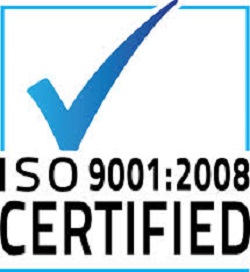


In addition, if you are investing in a variable annuity through a tax-advantaged retirement plan (such as a 401(k) plan or IRA), you will get no additional tax advantage from the variable annuity. Under these circumstances, consider buying a variable annuity only if it makes sense because of the annuity's other features, such as lifetime income payments and death benefit protection. The tax rules that apply to variable annuities can be complicated – before investing, you may want to consult a tax adviser about the tax consequences to you of investing in a variable annuity. |
Remember: Variable annuities are designed to be long-term investments, to meet retirement and other long-range goals. Variable annuities are not suitable for meeting short-term goals because substantial taxes and insurance company charges may apply if you withdraw your money early. Variable annuities also involve investment risks, just as mutual funds do.
How Variable Annuities Work
A variable annuity has two phases: an accumulation phase and a payout phase.
During the accumulation phase, you make purchase payments, which you can allocate to a number of investment options. For example, you could designate 40% of your purchase payments to a bond fund, 40% to aU.S. stock fund, and 20% to an international stock fund. The money you have allocated to each mutual fund investment option will increase or decrease over time, depending on the fund's performance. In addition, variable annuities often allow you to allocate part of your purchase payments to a fixed account. A fixed account, unlike a mutual fund, pays a fixed rate of interest. The insurance company may reset this interest rate periodically, but it will usually provide a guaranteed minimum (e.g., 3% per year).
Example: You purchase a variable annuity with an initial purchase payment of $10,000. You allocate 50% of that purchase payment ($5,000) to a bond fund, and 50% ($5,000) to a stock fund. Over the following year, the stock fund has a 10% return, and the bond fund has a 5% return. At the end of the year, your account has a value of $10,750 ($5,500 in the stock fund and $5,250 in the bond fund), minus fees and charges (discussed below).
Your most important source of information about a variable annuity's investment options is the prospectus. Request the prospectuses for the mutual fund investment options.
Read them carefully before you allocate your purchase payments among the investment options offered. You should consider a variety of factors with respect to each fund option, including the fund's investment objectives and policies, management fees and other expenses that the fund charges, the risks and volatility of the fund, and whether the fund contributes to the diversification of your overall investment portfolio.
During the accumulation phase, you can typically transfer your money from one investment option to another without paying tax on your investment income and gains, although you may be charged by the insurance company for transfers. However, if you withdraw money from your account during the early years of the accumulation phase, you may have to pay "surrender charges," which are discussed below. In addition, you may have to pay a 10% federal tax penalty if you withdraw money before the age of 59½.
At the beginning of the payout phase, you may receive your purchase payments plus investment income and gains (if any) as a lump-sum payment, or you may choose to receive them as a stream of payments at regular intervals (generally monthly).
If you choose to receive a stream of payments, you may have a number of choices of how long the payments will last. Under most annuity contracts, you can choose to have your annuity payments last for a period that you set (such as 20 years) or for an indefinite period (such as your lifetime or the lifetime of you and your spouse or other beneficiary). During the payout phase, your annuity contract may permit you to choose between receiving payments that are fixed in amount or payments that vary based on the performance of mutual fund investment options.
The amount of each periodic payment will depend, in part, on the time period that you select for receiving payments. Be aware that some annuities do not allow you to withdraw money from your account once you have started receiving regular annuity payments.
In addition, some annuity contracts are structured as immediate annuities, which means that there is no accumulation phase and you will start receiving annuity payments right after you purchase the annuity.
The Death Benefit and Other Features
A common feature of variable annuities is the death benefit. If you die, a person you select as a beneficiary (such as your spouse or child) will receive the greater of: (i) all the money in your account, or (ii) some guaranteed minimum (such as all purchase payments minus prior withdrawals).
Example: You own a variable annuity that offers a death benefit equal to the greater of account value or total purchase payments minus withdrawals. You have made purchase payments totaling $50,000. In addition, you have withdrawn $5,000 from your account. Because of these withdrawals and investment losses, your account value is currently $40,000. If you die, your designated beneficiary will receive $45,000 (the $50,000 in purchase payments you put in minus $5,000 in withdrawals).
| << Previous 1... 30 31 [32] 33 34 ...91 Next >> |








